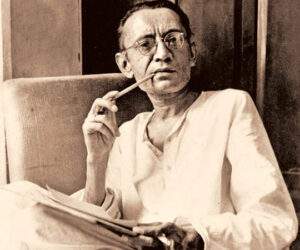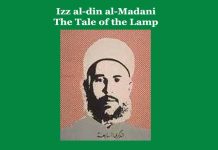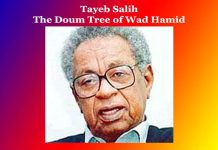S H Manto The Dog of Tetwal | An Analytical Study
S H Manto The Dog of Tetwal
S H Manto The Dog of Tetwal | An Analytical Study
‘The Dog of Tetwal’ by Saadat Hasan Manto deals with the themes of conflict, connection, ignorance, pride and senselessness. The story takes place just after the partition of India into two independent countries. What is interesting about the setting is that Manto gives each side a voice. The reader is given access to both the Indian and Pakistani camps that are fighting against one another.
Manto begins his story with an idyllic description of the nature of the hilly borders of India and Pakistan. Manto brings about an almost poetic description of peace and harmony in nature. He shows Nature to be indifferent to the calamity created by men though it sometimes becomes the victim of the turmoil of human conflict. He notices that flowers continue to bloom, bees go about their business of sipping nectar, birds are singing, and fluffy clouds sail in the skies. The occasional shot of the soldiers strikes a discordant note in the peaceful scene.
By putting the battle against this calm natural scene Manto further heightens the fact that man and his struggle for power disrupt the natural order of things.
The difference between nature and humankind is underscored by the fact that the seasons are changing as the story takes place. The change is occurring gently. While some literary works depict the seasons in conflict, Manto’s story shows that in nature even opposites such as summer and winter flow peacefully into each other. Manto writes “It seemed as if summer and winter had made their peace,”. But the soldiers on the other hand, although they are very much alike, cannot tolerate each other.
The setting which begins with the picture of nature is pastoral in nature as Pastoral literature portrays nature as being idyllic, peaceful, and free of the constraints and struggles of humans. Pastoral settings often allow human characters to find solace and peace that are not possible in a human-made society.
The story is set in the mountains of Tetwal during temperate and pleasant days in late September. There is peace in the mountains, but, instead of escaping to the beauty and tranquillity of nature, the soldiers bring war with them. The men cannot enjoy pleasant surroundings because they are not there to enjoy life but to kill.
After giving a vivid account of the calm and beautiful nature, the storyteller turns his look to the main theme of the story which revolves rounding a stray dog called Jhun- Jhun. It was loved by both the parties: the Indian soldiers and the Pakistani soldiers but became the victim of the partition of India that gave birth to communalism in both parties. The remarkable thing is that there is little difference between the two parties, particularly when it comes to their treatment of Jhun Jhun the stray dog. It is as though the dog is treated as a football by both sides until he no longer becomes useful and is shot by the Indian soldiers. Rather than viewing Jhun Jhun as a pet, both sides use him as a plaything to promote their own goals and ideals. The same goals and ideals that have caused the war in the first place.
There is a farcical element to the battle between each side as they kill a dog but no human as humans are scared of soldiers and like not to face them. The only victim in the story is Jhun Jhun the dog. It is as though both sides view the conflict half-heartedly. As though they have been given orders to fight yet are not committed to fighting which may be the point that Manto is attempting to make. He may be suggesting that the war itself was futile when in reality everybody who participated in the war was, in fact, similar to one another. Each man had families at home that worried about them and the conflict could have easily been resolved by political means rather than by the use of arms. The only dividing factor between those who party in the war was their religion. Manto also appears to symbolize the blindness of both opposing sides. As expected one would find it difficult to see at night time. However, the killing of Jhun Jhun occurs in the daytime. with each individual on both sides using Jhun Jhun as a symbolic tool to promote their nationality.
It is also possible that Jhun Jhun symbolizes the ignorance of both sides. The compassion shown by Singh, an Indian soldier when he gave the crackers to Jhun Jhun is not mirrored the next day when he shoots Jhun Jhun as the dog encamps himself on the Pakistani side. In reality, Singh’s actions are cruel but that is the nature of war. It is not only humans who may be used as pawns to fight or die like animals. Such is the hatred that exists between both sides that each is willing to use a dog as an instrument of suppression to satisfy their own lust for victory. In many ways, Jhun Jhun could be a person, an innocent individual who happens to be caught between both sides.
Thus the logic of natural boundaries seems to extend to the animal kingdom in this story and by it, Manto has shown us the senselessness of violence and its effects on the victim. 0 0 0
S H Manto The Dog of Tetwal
S H Manto The Dog of Tetwal | An Analytical Study
Read More: Ambais’ Short Stroy Yellow Fish-An Analytical Study
N. B. This article entitled ‘H Manto The Dog of Tetwal | An Analytical Study’ An Analytical Study’ originally belongs to the book ‘World Short Story Criticism‘ by Menonim Menonimus. S H Manto The Dog of Tetwal | An Analytical Study
Books of Literary Criticism by M. Menonimus:
- World Short Story Criticism
- World Poetry Criticism
- World Drama Criticism
- World Novel Criticism
- World Essay Criticism
- Indian English Poetry Criticism
- Indian English Poets and Poetry Chief Features
- Emily Dickinson’s Poetry-A Thematic Study
- Walt Whitman’s Poetry-A Thematic Study
- Critical Essays on English Poetry
- Tawfiq al-Hakim’s Novel: Return of the Spirit-An Analytical Study
- Tawfiq al-Hakim’s Novel: ‘Yawmiyyat Naib Fil Arayaf’-An Analytical Study
- Analytical Studies of Some Arabic Short Stories
- A Brief History of Arabic Literature: Pre-Islamic Period …
Books on Linguistics by M. Menonimus:
- A Brief History of the English Language
- Essays on Linguistics
- My Imageries
- Felicitous Expression: Some Examples
- Learners’ English Dictionary
Related Searches:
- Short Stroy Criticism
- The Indian English Short Story
- Individual and Society …
- ‘Deliverance’ by Premchand Analysis
- Summary of Rabindranath Tagore’s ‘The Exercise Book
- Short Story ‘Yellow Fish’ Essay Example
- Notes on Roger Mais’s ‘Blackout’
- ‘Blackout’ by Roger Mais
- ‘The Dog of Tetwal’ Saadat Hasan Manto
- The Dog of Tethwal …











